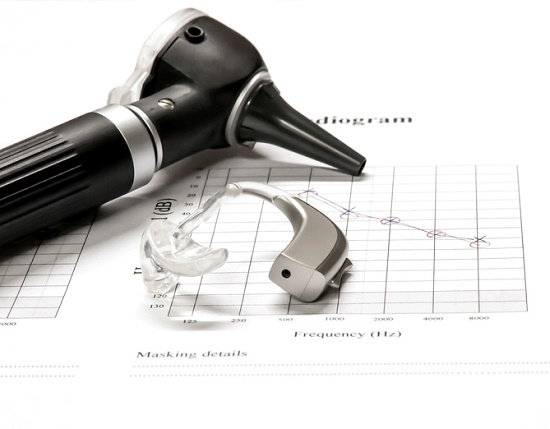
Are you contemplating investing in hearing aids?
If the answer is yes, it can seem overwhelming at first. There are a lot of options available, and the confusing terminology doesn’t help.
That’s why we’re going to make clear the most common and important terms, so when you talk with your hearing professional you’ll be prepared to find the ideal hearing aid for you.
Hearing loss and testing
High-frequency hearing loss – this is the most commonly encountered kind of hearing loss. Patients with high-frequency hearing loss have the most trouble hearing higher frequency sounds, like the sounds of speech.
Sensorineural hearing loss – this type of hearing loss comes about when there is damage to the nerve cells of the inner ear. This is the most common kind of permanent hearing loss triggered by direct exposure to loud noise, aging, genetics, or other medical conditions.
Bilateral hearing loss – hearing loss in both ears, which could be symmetrical (the equivalent level of loss in both ears) or asymmetrical (different levels of loss in each ear). Bilateral hearing loss is normally best treated with two hearing aids.
Audiogram – the diagram that provides a visual representation of your hearing exam results. The vertical axis measures decibels (volume) and the horizontal axis measures frequencies (pitch). The hearing professional records the lowest decibel level you are able to hear at each frequency. If you need higher volumes to hear higher frequencies, your audiogram will show a pattern of high-frequency hearing loss.
Decibel (dB) – the unit utilized to measure sound level or intensity. Typical conversation registers at about 60 decibels, and continuous exposure to any sound over 80 decibels could result in irreversible hearing loss. Seeing that the scale is logarithmic, an increase of 6-10 decibels doubles the volume of the sound.
Frequency – represents pitch as measured in hertz. Picture moving up the keys on a piano, from left to right (low-frequency/pitch to high-frequency/pitch).
Threshold of hearing – The lowest decibel level that can be detected at each individual frequency.
Degree of hearing loss – Hearing loss can be labeled as mild (26-40 dB loss), moderate (41-55), severe (71-90), or profound (91+).
Tinnitus – a constant ringing or buzzing in the ears when no exterior sound is present. Typically a signal of hearing injury or loss.
Hearing aid styles
Digital hearing aid – hearing aids that include a digital microchip, utilized to custom-program the hearing aids to accommodate each person’s distinctive hearing loss.
Hearing aid style – the type of hearing aid specified by its size and location relative to the ear. Main styles include behind-the-ear, in-the-ear, and in-the-canal.
Behind the ear (BTE) hearing aids – the majority of hearing aid parts are contained within a case that rests behind the ear, connected to an earmold by a clear plastic tube. Mini-BTE hearing aids are also available.
In the ear (ITE) hearing aids – the hearing aid parts are enclosed inside of a case that fits in the exterior part of the ear.
In the canal (ITC) hearing aids – the hearing aid parts are enclosed in a case that fits within the ear canal. Completely-in-the-canal (CIC) hearing aids are also obtainable that are nearly invisible when worn.
Hearing aid parts
Earmold – a piece of plastic, acrylic, or other soft material that is formed to the curves of the patient’s ears, utilized for the fitting of hearing aids.
Microphone – the hearing aid component that picks up sound in the environment and converts the sound waves into an electrical signal.
Digital signal processor – a specialized microprocessor inside a hearing aid that can adjust and enhance sound.
Amplifier – the component of the hearing aid that boosts the volume of sound.
Speaker – the hearing aid part that supplies the enhanced sound to the ear.
Wireless antenna – available in select hearing aids, enabling wireless connection to compatible equipment such as smartphones and music players.
Hearing aid advanced features
Variable programming – hearing aid programming that allows the user to adjust sound settings depending on the environment (e.g. at home versus in a chaotic restaurant).
Directional microphones – microphones that can center on sound originating from a specific location while minimizing background noise.
Telecoils – a coil installed within the hearing aid that allows it to connect with wireless signals emanating from telephones, assistive listening devices, and hearing loops installed in public venues.
Noise reduction – functionality that assists the hearing aid to distinguish speech sounds from background noise, which results in the enhancement of speech and the inhibition of distracting noise.
Bluetooth technology – enables the hearing aid to connect wirelessly with several devices, such as smartphones, computers, MP3 players, and other compatible products.
Not sure which features you need, or which you could live without? Let us help you discover the best hearing aid for your distinct requirements. Give us a call today!






